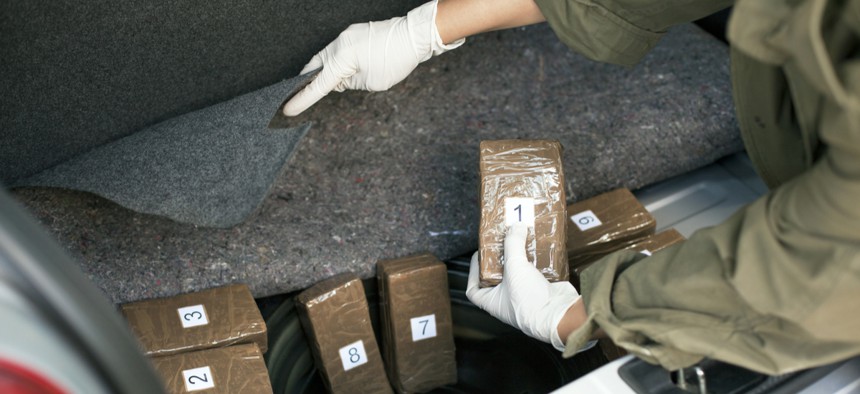Bill to Boost CBP’s Synthetic Opioid-Detecting Tech Awaits President's Signature

wellphoto/Shutterstock
Among other requirements, it calls for the establishment of a new, centralized database.
Legislation directing the Homeland Security Department to gauge and ultimately help advance the technology federal agents use to detect and seize illicit drugs at America’s entry points is on its way to the president’s desk.
The Senate on Monday passed the bipartisan DHS Opioid Detection Resilience Act by unanimous consent—almost a year to the date since it was passed in the House. The bill was first introduced by Rep. Clay Higgins, R-La., alongside several other co-sponsors in October 2019.
“I’ve spoken directly with frontline DHS and [Customs and Border Protection] agents regarding what resources they need to carry out their mission,” Higgins told Nextgov over email Wednesday. “Enhanced detection technology to stop fentanyl and synthetic opioids is one of those needs.”
Through the new legislation, Higgins and its other sponsors hone in on CBP’s technology to help stop illegal drugs before they cross over into America. The nation has for years been enduring a crisis of opioid abuse, which kills more than 100 people in the U.S. by overdose each day. Chemical screening devices help federal agents at America’s ports of entry and out in the field measure a substance’s spectrum and match it to other drugs uncovered in communities.
The majority of fentanyl seized at the U.S. southwest border tends to be less than 10% pure, according to the Drug Enforcement Administration’s National Drug Threat Assessment in 2018. That stat is at the root of the issue this bill aims to improve.
“There are existing detection gaps for narcotics at purity levels less than 10%,” Higgins explained. “Our legislation addresses the existing detection gaps with improved technology and implements a centralized database for chemical screening devices to help law enforcement stay ahead of cartel tactics.”
Specifically, the legislation directs CBP’s commissioner to produce and implement a strategy to guarantee that all screening devices the agency deploys can spot substances with purity levels of “less than or equal to” 10%, or provide agents at ports of entry with different methods to actually identify narcotics of lower purities that come through. The agency would also need to test emerging tools and technology for drug detection ahead of any new procurements in this realm. On top of that, the bill also requires the department to hash out and implement a new plan to create “a centralized spectral database for chemical screening devices.”
“Those chemical screening devices are only as strong as their libraries. Smugglers are constantly adapting their methods and developing new analogs of synthetic opioids to try to evade detection,” Higgins said. “A centralized database ensures that the detection capabilities of chemical screening devices are evolving at the same pace.”
Meeting the requirements posed might not come without a cost. But Higgins confirmed that “based on our conversations, existing funds appropriated to DHS can be repurposed and are available to implement the changes in our legislation.”
NEXT STORY: AFWERX Launches Space Innovation Hub






